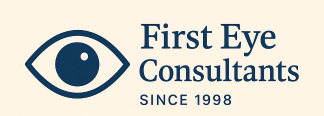Headaches from refractive errors of the eye
Introduction
Headaches from refractive errors of the eye are caused by the eye’s inability to properly focus light on the retina, leading to eye strain and discomfort. These headaches are usually dull, aching, and often linked to visual tasks such as reading, using a computer, or watching television. Here’s a detailed description:
Characteristics of Headaches from Refractive Errors:
- Location:
- Often felt in the forehead, around the eyes, or temples.
- Sometimes described as a pressure behind the eyes.
- Timing:
- Usually occurs after prolonged visual activity (e.g., reading, screen time).
- May worsen throughout the day as the eyes become more fatigued.
- Quality:
- Dull, aching, or throbbing in nature.
- Not typically sharp or pulsating like migraines.
- Associated Symptoms:
- Blurry vision
- Squinting
- Eye strain or fatigue
- Watery or dry eyes
- Difficulty concentrating
- Relief:
- Headache often improves with resting the eyes, using corrective lenses, or taking visual breaks.
Refractive Errors That May Cause Headaches:
- Myopia (Nearsightedness):
- Difficulty seeing distant objects clearly.
- Eye strain occurs when trying to focus on distant objects.
- Hyperopia (Farsightedness):
- Trouble seeing nearby objects clearly.
- Eye muscles overwork to maintain focus at near range, causing strain.
- Astigmatism:
- Blurred or distorted vision at all distances due to irregular cornea shape.
- Constant effort to focus can cause headaches.
- Presbyopia (Age-related Farsightedness):
- Affects people over 40.
- Difficulty focusing on near objects, often noticed while reading.
When to See an Eye Doctor:
- If you experience frequent headaches with blurry vision or eye strain, it’s important to get an eye examination.
Correcting the refractive error with glasses, contact lenses, or refractive surgery can usually resolve these headaches
